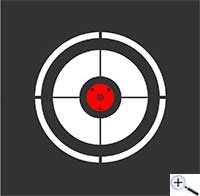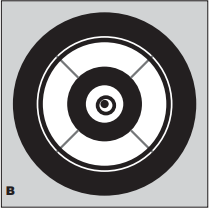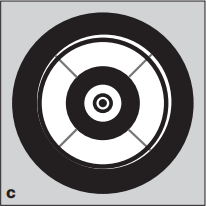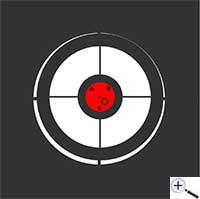Actual Step |
Collimation Procedure for Richey-Chrétiens Reflectors |
updated: 2025-10-09 |
|
Purpose |
For a perfect alignment of your optical train (secondary and primary mirrors) you should check the collimation of your telescope from time to time, especially for reflectors, such as Newtonian, Schmidt-Cassegrain (SCTs) or Ritchey-Chrétien (SCTs) type telescopes. Read this article to learn more about Ritchey-Chrétien (RC) Telescopes: Mastering Small Ritchey-Chrétien Collimation for Astrophotography | High Point Scientific |
|
|
Previous Step |
||
|
Next Step |
||
|
Resource(s) |
|
|
The following article(s) discusses the collimation of Ritchey-Chrétien (RC) telescopes, which are the most difficult telescopes to collimate due to their hyperbolic primary and secondary mirrors.
IMPORTANT: NEVER ADJUST HTE SECONDARY CENTER SCREW
Doing so will alter the focal length of the telescope and can cause spherical abberation. This spacing is set at the factory.

Possible collimation problems
- Tilted primary mirror
- Tilted secondary mirror
- Tilted focuser: this means that the optical axes of the focuser and the telescope do not match
- A shifted secondary mirror resulting in incorrect mirror distance between primary and secondary mirror and wrong focal length and back focus
Collimation of Ritchey-Chrétien telescopes and similar systems
It is well known that collimating an RC is not an easy task. Usually it is necessary to use a star at night. With the TS collimator it is possible to achieve an ideal collimation result in daylight, comparable to the Takahashi collimator. This means that you always have an optimally collimated RC telescope at night. At the same time, collimation is simple and can be done by anyone. But it is important that the secondary mirror of your telescope has a central mark. Just follow the steps below.
There is a general problem with collimation: the equipment required for very good collimation is usually very expensive, and the price of the equipment sometimes exceeds the value of the telescope to be collimated. So compromises have to be made.
Collimation Status |
General Picture |
|
Ideal CollimationWhen the image looks like this, collimation is almost complete and can be tested. If necessary, the distance between the mirrors must be checked (only visible on the measured focal length using a current image with this optic) and the primary mirror must be fine-tuned using stars and a Ronchi eyepiece. |
|
|
Bad CollimationIf the image does not look centered, you should begin with the collimation for achieving the optimal result with the telescope. The picture shows 2 collimation errors:
|
|
|
General Collimation Steps
Collimating an Cassegrain or RC telescope is usually done in 5 steps:
- Step 1: Adjusting the Primary Mirror
- Step 2: Collimation of the Secodary Mirror
- Step 3: Final Collimation
- Step 4: Correct the Focuser Tilt (typically done with a tilting adapter flange)
- Step 5: Check and correct Mirror Spacing
Created with the Personal Edition of HelpNDoc: Elevate your documentation to new heights with HelpNDoc's built-in SEO





